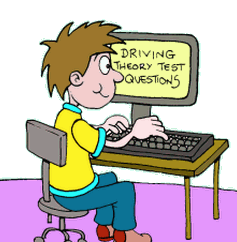What causes accidents: junctions
An alarmingly high proportion of accidents happen in and around junctions.
This is because of the combination of busy roads, traffic that can be nose to tail and people crossing all sorts of different paths, combined with impatience and perhaps tiredness, means that some vehicles either drive aggressively, get confused by road markings, or simply make mistakes: all of these mean that junctions are definitely an accident hot spot.
Particularly where there are lights and filter lanes you get all sorts of weird and wonderful behaviour. Some people get confused by filter lights and go straight ahead when in fact say only the left filter comes on. Others will think they can go and turn straight away and cut across traffic going straight ahead, whilst if there is a vehicle close behind you pushing the lights or a cyclist in the road then there are so many potential hazards to consider.
Therefore you should always pay particular attention around junctions.
Go a little more slowly than you would normally in usual conditions because this will give you more time to react when something unexpected happens.
An additional complication is that there are often pedestrians around in some junctions and therefore whether they will cross a road or not that you are about to turn into can cause accidents because other drivers will make different assumptions about how you will behave, and this then impacts their road position and speed too.
Finally, when you need to turn across approaching traffic, make sure you only do so when safe. Although you might feel pressured by causing cars to wait behind you, you should only turn when it is safe to do so and not try and cut in front of an approaching car where the margin is really too tight.
Related Articles...
Thinking about a greener car
It is interesting to note that a signficant amount of the greenhouse gas emissions of the entire country comes from simply car travel: noticeably over 10% does.
Therefore if you have a type of...
What causes accidents: speed
There is a well known saying from safety campaigns which simply says that "speed kills".
Although many people think that you have to be travelling really quickly in order to make an impact...
What to expect at a hazard perception test
The test has fourteen different clips, as outlined in the article entitled 'how to pass the hazard perception test'.
Each of those clips starts counting down from ten to zero, in order to...
Pass Plus Explained
There is an old saying of driving instructors which they state once you've passed your test, and that is that now you really learn to drive. The idea is that you are about to start driving...
What are driving offences
Driving offences are what happens when you do not meet your obligations as a road user.
This could be something like not having the correct documentation that you require or something much...
How hazard perception scoring works
For each hazard there is a possible score of zero to five that is available. With a total of 15 hazards to find that makes a total possible score of 75 being available on the hazard test.
The...
How to pass the hazard perception test
First you need to understand just what a hazard is. Broadly, it is any element that can introduce risk into the driving scenario.
There are various different types of hazard that are...
When to expect your licence
The answer to this question depends on whether you have a licence issued after March 2004 or not, which was a photocard driving licence. If so, then you h'll have the option to get it...
What is driving test theory?
Theory is something we understand when it comes to maths or science. A theory is a prediction as to why something that has usually been observed to happen does happen, and scientists use theories...
What's the point of the theory test?
The official theory test is a relatively recent addition to the driving test, and has evolved and become more comprehensive over time. For many of us who ask our parents about the driving test,...
Back to home page of driving theory test questions

